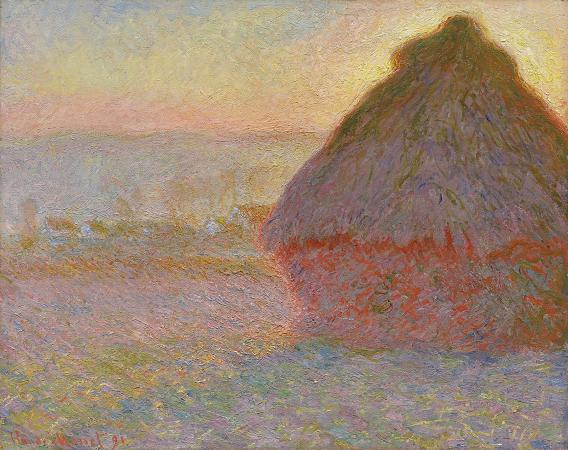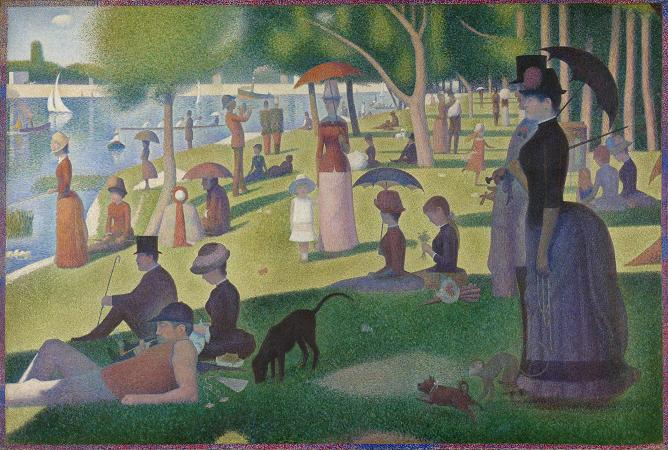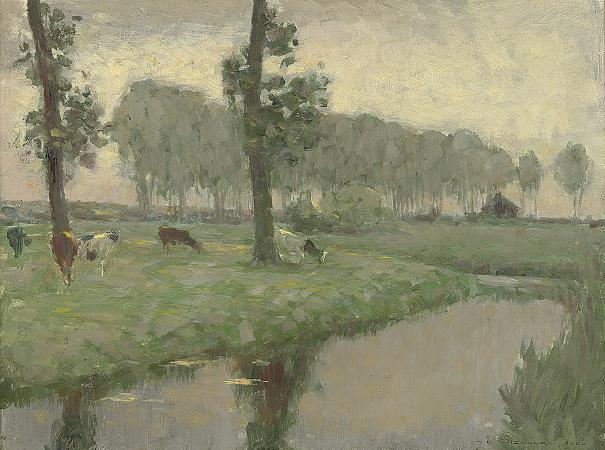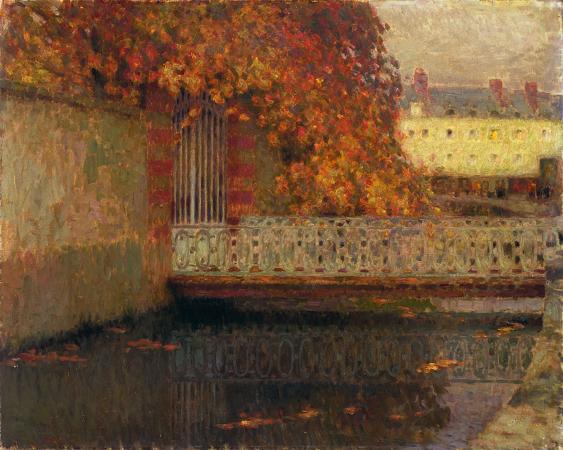Henri Le Sidaner (1862 - 1939). Henri Eugène Augustin Le Sidaner who was a contemporary of the Post-impressionists, was an intimist painter known for his paintings of domestic interiors and quiet street scenes. His style contained elements of impressionism with the influences of Édouard Manet, Monet and of the Pointillists discernible in his work. Le Sidaner favoured a subdued use of colour, preferring nuanced greys and opals applied with uneven, dappled brushstrokes to create atmosphere and mysticism. A skilled nocturne painter, he travelled widely throughout France and Europe before settling at Gerberoy in the Picardy countryside from where he painted for over thirty years. Le Sidaner's paintings and pastels were widely collected throughout his career. His seductive views of the gardens he created in the ruins of the medieval fortress at Gerberoy, with their recently vacated tables dappled in sunlight and overhung by roses, have cemented his reputation as a unique artist who does not fit easily into an art movement. Henri Le Sidaner was born August 7, 1862 at Port Louis in Mauritius, where his Breton parents Jean Marie and Amélie Henrietta were living. His father Jean Marie was a ship inspector for Lloyd's whose business took the family back to France in 1872 The remainder of his childhood was spent in Dunkerque where he attended the Collège et Lycée Notre Dame des Dunes and where he met and befriended Eugène Chigot who was to become a lifelong friend and supporter. He showed aptitude for painting, in which he was supported by his parents, and attended art classes at the atelier of Alphonse Chigot and with a teacher who had been a pupil of Philippe-Jacques van Bree. Le Sidaner's portfolio was adjudged good enough for the city of Dunkerque to award him a scholarship and in 1880, at the age of eighteen, he moved to Paris and the prestigious École nationale supérieure des Beaux-Arts. In Paris he studied under Alexandre Cabanel, one of the most influential teachers of belle époque French painting.Although Cabanel mainly painted in an academic style, that were dismissed derisively as L'art pompier by some critics, he possessed a deep knowledge of nineteenth century French art, in particular of En plein air painting and the naturalism of the Barbizon School. According to his biographer Le Sidaner saw Manet's final exhibits at the Paris Salon and was deeply reflective at what he saw in the modernist Manet's work. The result was that Le Sidaner resigned from Cabanel's school, on the grounds of artistic differences. Le Sidaner's interests in the use of colour, softness of form and in painting in the gloaming light were formed during this period as he sought an artistic cure in naturalism and En plein air painting. In 1883 he returned to the Côte d'Opale where he joined fellow artist Eugène Chigot at Étaples to established an artists' workshop and regular exhibitions that would eventually develop into a school of art, called the Villa des Roses.Étaples had a tradition of en plain air painting established by Charles-François Daubigny, who retreated there from the outbreak of the Paris Commune in 1871 and of the local Deauville painter Eugène Boudin, a leading post impressionist. In the late nineteenth-century numerous artists were drawn by the sand dunes, the atmospheric light and the remnants of an older France. In particular artists from the United States, Australia and the British Isles settled around Étaples in a loose collective. Most left at the outset of Great War in 1914 as Flanders became part of the Western Front. Le Sidaner stayed at Étaples for twelve years preferring to work in isolation. In the meantime a febrile debate into the meaning of art was gathering apace in Paris. The Société des Artistes Indépendants was founded in 1884 whilst movements such as Pointillism with their exuberant use of colour were undermining the foundations of academicism. Against this background in 1887 Le Sidaner sent his first painting to the Paris Salon followed in 1888 by La Promenade des Orphelines one of his most celebrated early works. La Benediction De La Mer exhibited in 1890 was awarded with a third place medal and a travel stipend to visit Rome where Le Sidaner made surviving copies of works by Giotto and Fra Angelico. La Benediction De La Mer is a painting with distinctly religious undertones.
more...










